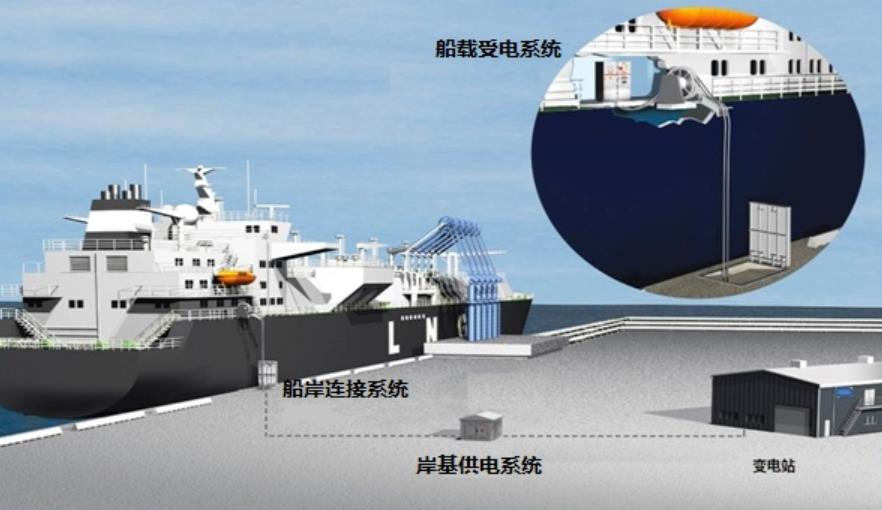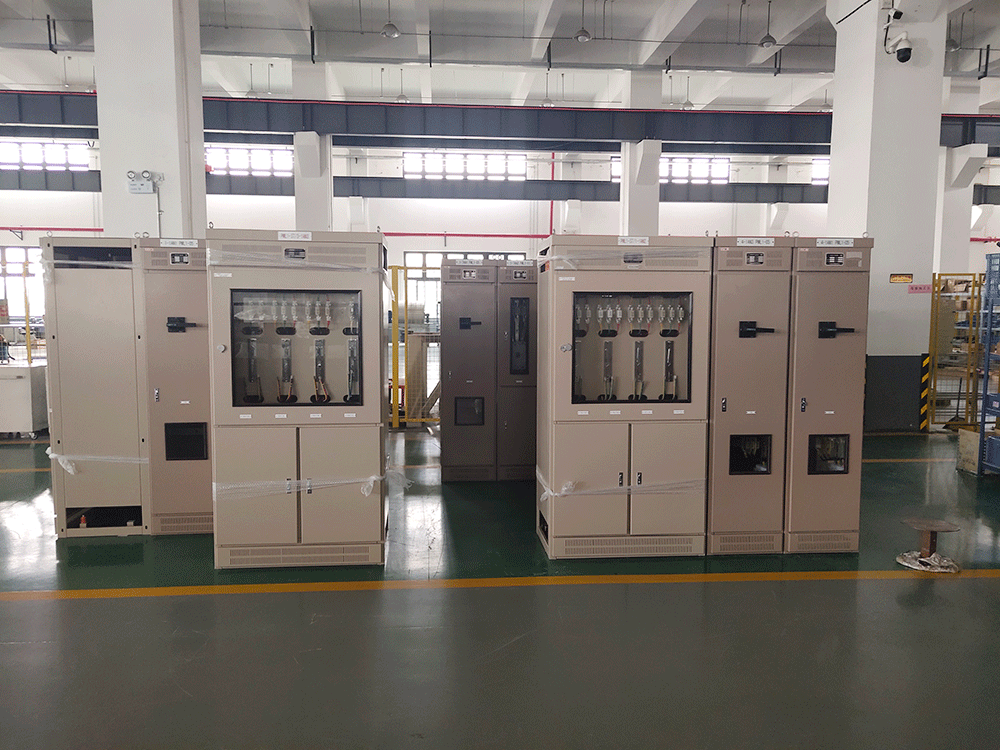1. Operating principle of shore power system
Shore power system refers to the system that the port supplies power to the ship during the normal operation of the ship, including shipborne devices and shore based devices. With the voltage of 1KV as the dividing line, the shore power system is divided into high-voltage shore power system and low-voltage shore power system. The low-voltage shore power in the industry mainly adopts the voltage level of 380V/50Hz or 440V/60Hz, and the high-voltage shore power adopts the voltage level of 6KV/50Hz or 6.6KV/60Hz or 11KV/60Hz. The working principle of the shore power system is relatively simple, which is to transmit the power from the shore power supply system (i.e. shore based device) to the ship’s power receiving system (i.e. shipborne device) through the ship shore interaction part.
The onshore power supply system is used to convert the power supply of the power grid into the power supply of the voltage and frequency level required by the berthing ships through transformers, converters and isolation transformers, and finally deliver it to the terminal junction box. It is worth mentioning that the converter in the shore based device is a product developed based on the frequency conversion technology of power devices and is the core equipment in the onshore power supply system.
The ship power receiving system is a part of the ship power distribution system. Generally, ships with shore power system will have AMPS mark on the classification certificate. It is mainly composed of cable winch, shipborne transformer and electrical management system. The electrical management system shall have the functions of voltage indication, polarity or phase sequence (three-phase AC) detection, emergency cut-off, safety interlock, load transfer, short circuit protection, reverse power protection, etc.
2.Prospects for the use of shore power
There are also some problems in the process of shore power propulsion. For example, the number of ships with power receiving facilities is small, the initial port investment is high, the profit rate is low, the economy of shore power use is not high, the interface standard is not unified, and the cost of ship transformation is high. In view of the above problems, relevant departments have also issued relevant policies. For example, the port, ship owner or operator will be given certain subsidies for shore power transformation, adopt preferential electricity prices, modify relevant technical rules to require mandatory installation of shore power equipment on some types of ships, and refine interface standards.
In the foreseeable future, hydrogen power, hydrogen fuel cell power and lithium battery power will not become mainstream propulsion power. Even if LNG power becomes the mainstream propulsion power, it cannot achieve the goal of zero carbon emissions after berthing. Therefore, shore power is the most feasible solution to achieve zero carbon emissions during berthing. For some domestic and inland navigation ships, there are new revised technical inspection rules that require shore power installation. However, due to the limitation of manufacturing and refitting cycles, ships with power receiving equipment will take several years to operate in large quantities. This is the dividend period for future shore power supporting manufacturers, and also a new content for subsequent supervision by the maritime department. After vigorously promoting the construction of port shore based power supply infrastructure in recent years, the onshore power construction has been basically completed. With the comprehensive promotion of hardware facilities, it is believed that China’s green port vision will be realized in a few years.
Post time: Sep-28-2022


